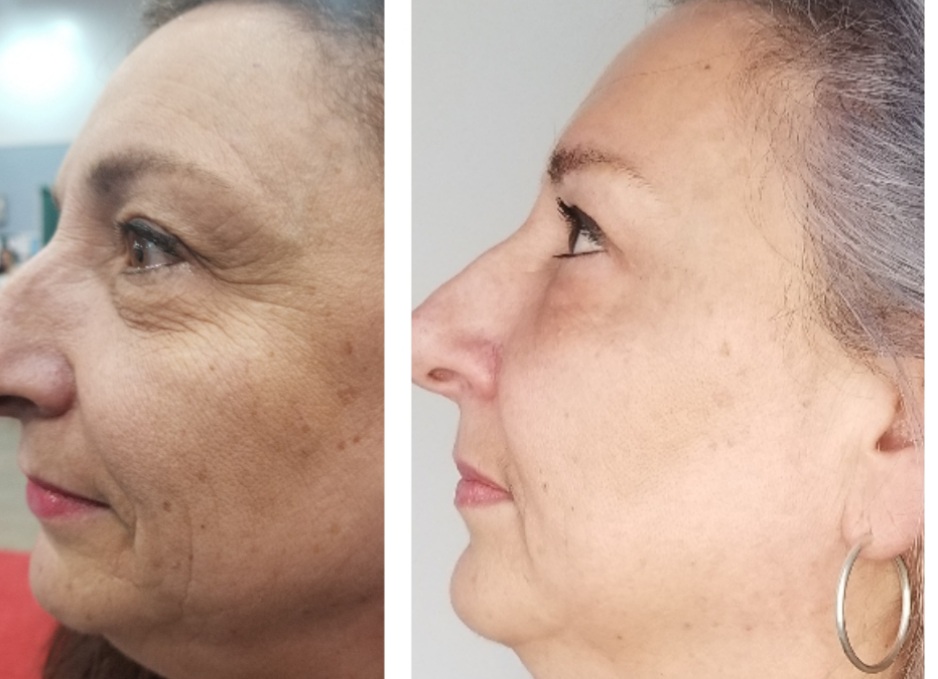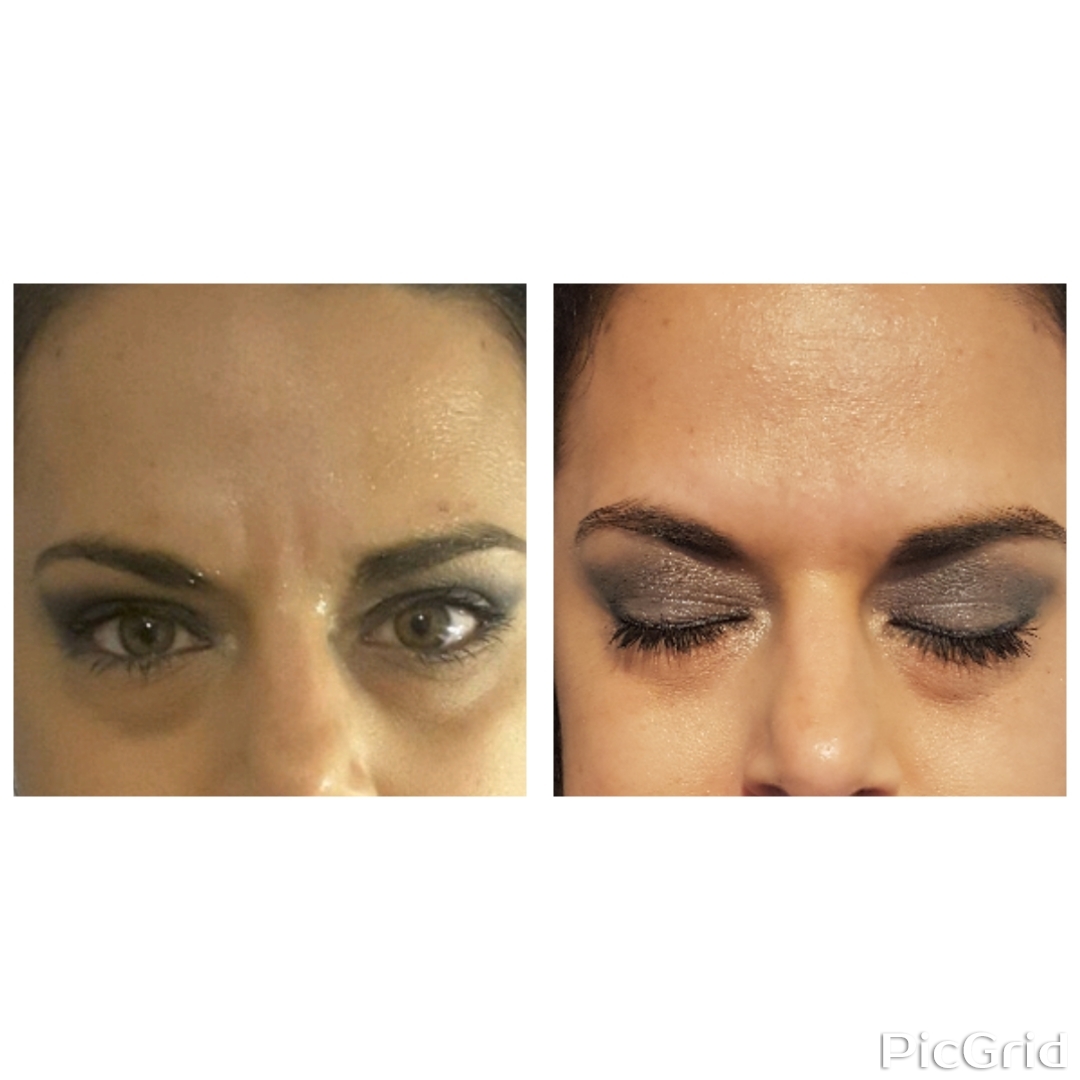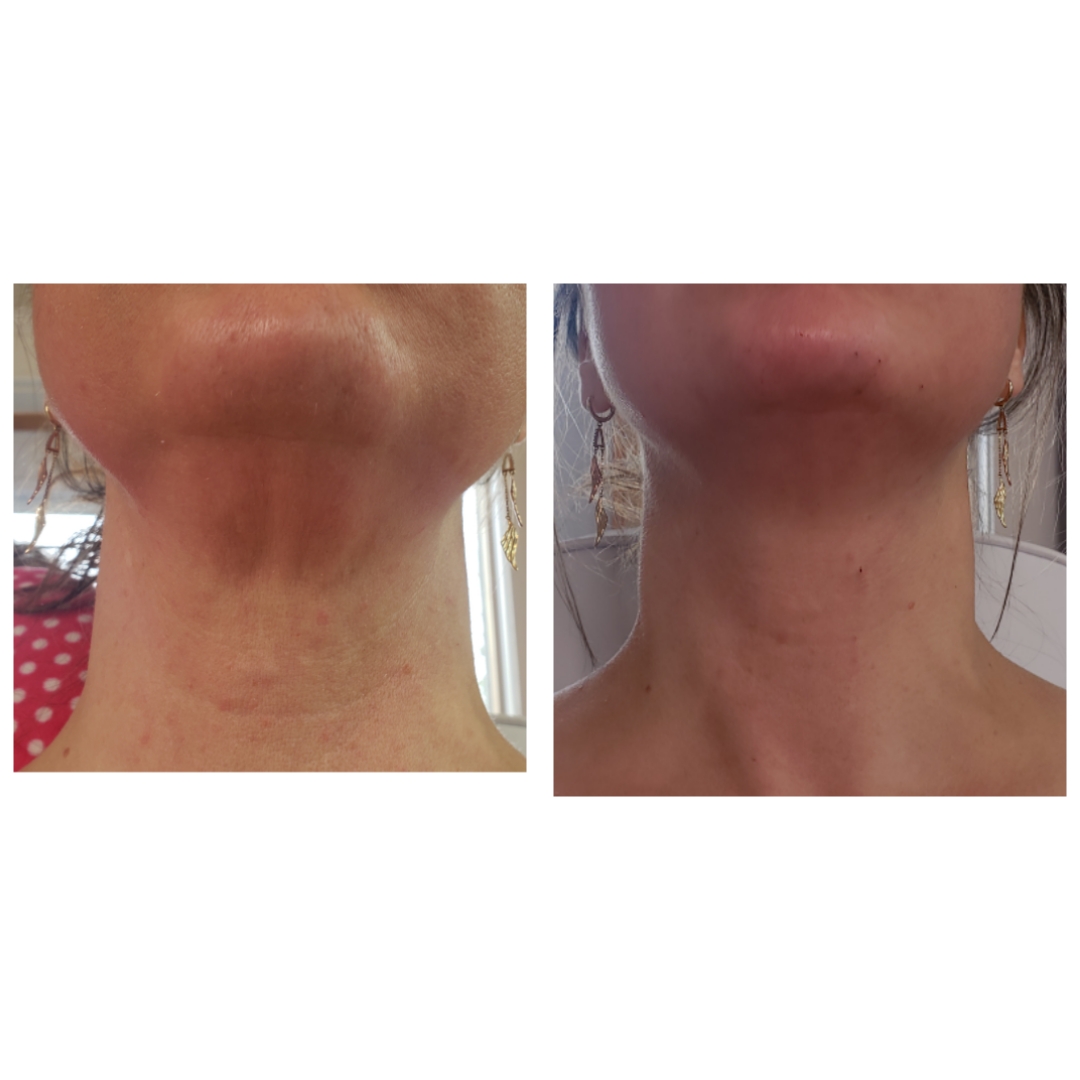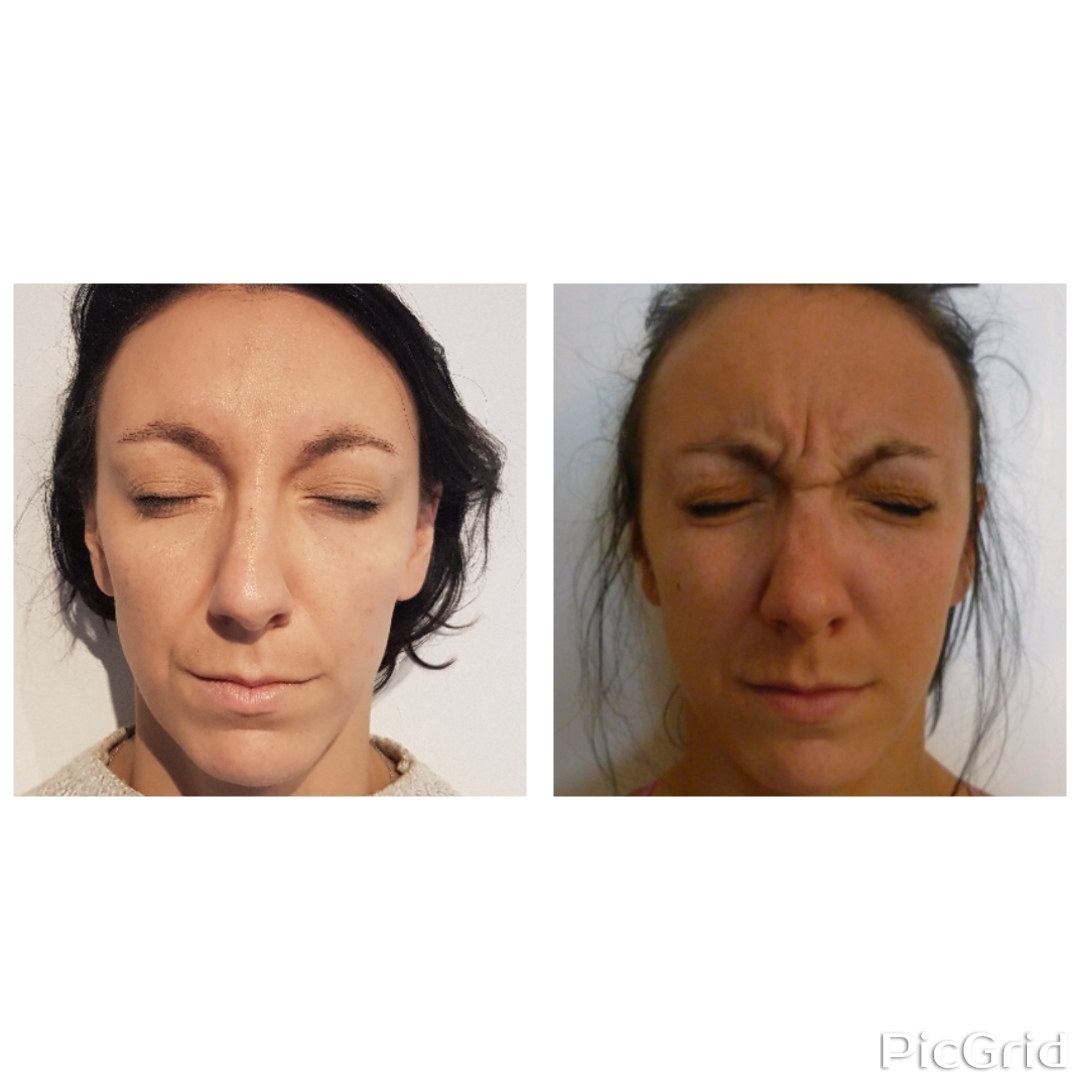MONCTON’s PREMIER MEDISPA – Our Services
What is Botox
Hello!
So, What Exactly is Botox?
We got you!
Reduce the appearance of facial wrinkles
Treat conditions such as excessive sweating
Can help prevent chronic migraines
We are happy to provide Botox injections in the Greater Moncton area since 2013.
When it comes to Botox in Moncton, or any other cosmetic treatment for that matter, experience matters. Choose an injector that is highly skilled and trained in using Botox. This ensures the best possible results.
Our Blog
Ta-da! I've gathered all the blog posts we've written about Botox in one convenient spot! These little nuggets of wisdom should help you on your journey to learning more about this amazing procedure!
Botox Before & After
What is Botox
- The Dangers of Bad Botox: How to Avoid Unwanted Results
- Is Botox Safe? Debunking the Myths and Misconceptions
- Side Effect of Botox
- How Does Botox Work? Understanding the Mechanism of Action
- What Does Botox Do
- How Long Does Botox Last?
- Botox Treatment
- Botox vs Juvederm: What's the Difference?
- What Is Botox Used For?
Botox For Migraines
- Botox for headaches
- Migraines Botox Injections Sites
Botox Injection
- Botox Consultation
- Botox Under eyes
Botox Underarms
Cost of Botox
- How much is Botox
- Botox Treatment prices
- Is Botox Expensive
- Price for Botox injections in the forehead
- How much does botox cost for forehead wrinkles?
- Is 50 Units of Botox a Lot?
- Units of Botox For Forehead Lines
- How Much Does Botox Cost in Canada? | A Comprehensive Guide
Lip Botox
This isn’t the usual first question that women ask when they’re considering Botox. They believe they already know the answer to this one. While some maybe do, most really don’t. So, allow us to give you the real scoop on this matter.
Botox is a brand name coined by Allergan, its manufacturer, for a product derived from Botulinum Toxin A. Yes, it comes from a neurotoxin that causes Botulism poisoning and can lead to severe paralysis and death.
Even with its infamous effects though, doctors have been using the toxin to treat these medical conditions since the 1980’s:
- lazy eyes (strabismus),
- uncontrollable eyelid twitching (blepharospasm),
- severe underarm sweating (hyperhidrosis),
- upper limb spasticity,
- involuntary neck spasms (cervical dystonia), and
- migraine headaches.
The cosmetic use of the toxin began in 1989 with the Carruthers spouses – a dermatologist-ophthalmologist team. They were the first doctors who explored the possibility of injecting small quantities of the toxin into specific facial muscles to reduce the appearance of dynamic wrinkles. Since then, many scientists have jumped on the bandwagon to discover ways of safely harnessing the toxin’s natural effects for aesthetic purposes.
Let’s fast forward to 2002. FDA finally approved the use of Botox to treat glabellar lines or that nasty ‘11’ that appears between your eyebrows when you frown. This was momentous because it was the first time that the government gave the green light for the cosmetic use of the toxin.
Although the indication is limited to 1 cosmetic purpose, medical practitioners have been successful in the safe, off-label use of the drug for other areas of the face as well.
Just in case the words ‘off-label use’ got your warning bells ringing, let us assure you that this is a common practice in the medical field. Doctors are legally allowed to prescribe a drug for purposes other than what is approved by the FDA so, there’s really no reason to stress over this.
A concern that can reasonably cause strain, though, is safety. We’re going to hammer away at this right now and answer the million dollar question:
Is Botox Safe?
The answer is a simple and resounding YES!
Botox, produced by Allergan and used in its recommended dosage is very safe.
We know that this issue is your primary concern so, let us give not just 1 but 4 reasons to convince you that Botox is safe.
- Its FDA approval is supported by several studies and clinical experience. Allergan even claims that their research lasted for approximately 100 years (author’s note: we don’t vouch for this fact). Because of the amount of time and effort put into the drug’s R&D, the industry has established vital ground rules like the maximum cumulative dosage within a period of time as well as techniques in injecting the drug. Bottom line is that sufficient evidence supports the conclusion that proper use of the product will not jeopardize the health of patients.
- The drug is a sterile and purified version of the Botulinum toxin. This means that the toxin undergoes a process that is FDA-approved. This transforms the poison into a medicine suitable for and beneficial to humans.
- Only a small amount of Botox is used for every treatment to limit its paralyzing effect to the muscle injected. So, there’s really no danger of botulism poisoning.
We know you’ve heard of reports linking paralysis and death to Botox but those are totally off target. The patients faced such horrible consequences in those instances because they were using unauthorized Botox substitutes. Several publications (e.g., consumer report by the FDA and a brief report in the Journal of the American Medical Association) confirm that using unapproved and unlicensed versions of the toxin can cause severe botulism poisoning. Despite what you may have heard or read, no death has been recorded as caused by using real Botox produced by Allergan.
- Botox injectors, especially those who have been doing it for years, have developed a better understanding of the science and art behind the treatment.
It will be good to choose a doctor who’s had years of experience in Botox. A key to a good treatment is that you trust the skill and feel comfortable with the person performing the procedure. If there’s something (anything!) that’s bothering you, you should feel free to ask your physician.
All these boil down to a simple equation: FDA approved drug + used in determined safe quantities + experienced injector + smart patient = safe Botox treatment.
Did you notice the last ingredient that we added to the equation?
Of course, YOU will ultimately determine how safe your treatment will be. You will be the one making the choices so the most important safety tip we can give you is to be a smart Botox patient. Arm yourself with the right information before undergoing the procedure. You may want to start with reading this Guide all the way through. We’ve placed only the correct information here so you can be sure of everything you read. We weeded the myths from the truths and left only the details that all Botox patients should know, but usually don’t.
Now, that was rather serious, wasn’t it? If you found it a tad somber for your taste, please bear with us… we think safety is no laughing matter, anyway, but we hope you’re hanging on in there as we trudge towards another burning question in the minds of Botox patients:
How Does Botox Work?
Answering this question requires delving a little bit into the science behind the drug. A good jump off point is the basic understanding of the nervous system. Now, before you scurry away, we’ve got the perfect analogy to something unscientific but we’ve got to get the technical discussion out of the way first. Don’t worry, we promise to make this quick and painless…
The nervous system is composed of organs in charge of the body’s internal communication – this is how the brain tells the different parts of our body to move. For a muscle to contract, it needs to receive the signal that the brain sends through a series of nerve cells. The cue that it’s waiting for is a chemical neurotransmitter called acetylcholine. When the muscle receptors recognize the chemical, it knows that it has to tighten and bunch up.
What Botox does is cleave the protein necessary for the release of acetylcholine. If acetylcholine is not released, the muscle will not know that the brain is already telling it to contract.
You can compare this to the network of wires that connects our telephone system. Imagine 2 telephones, one owned by the brain, the other by the facial muscles.
Without Botox, both phones are working and the message to contract is received clearly.
With Botox, the brain is already calling with the message to move but the phone on the muscle’s side has been yanked out from the wall so, it stays in bed, lounging nonchalantly. Because the muscle remains immobile, the overlaying skin also stays flat. This allows the skin’s natural tension to yield to its inherent tendency to smooth out, reducing the appearance of dynamic wrinkles.
Botox is a pretty neat little toxin, right? Once you get the confusing science stuff out of the way, it’s becomes easy to appreciate how it can work for you.
And now that we got the technical part out of the way, you might now be wondering:
Am I Good Candidate for a Botox Treatment?
Er, we have good news and bad news…
Here’s the good news: everyone has the same basic nerve system so, Botox will work for almost everybody.
The bad news is that we used the word ‘almost’. There are certain people who may be better off not having Botox. We’ve come up with a simple checklist so you can assess your suitability for the procedure. Just answer the following questions:
I have dynamic wrinkles on my face and I want to erase them.
Yes No I am not pregnant and I don’t have plans of conceiving.
Yes No I am not lactating and I don’t have plans of breastfeeding.
Yes No I don’t have any neuromuscular disease.
Yes No I don’t have any allergic reaction to the Botulinum Toxin.
If you answered NO to any of the questions above, Botox may not be right for you at this point in time. Let us expound a little bit on each of the items above.
- Dynamic Wrinkles
We’ve mentioned dynamic wrinkles quite a number of times already and we were holding off explaining what it meant for this part. We know that not everyone is aware that there are actually 2 types of facial lines (some of us didn’t know either!) so we’ll go a wee bit off tangent to discuss them. We promise it will be worth the read so, let’s get on with it…
The 2 kinds of wrinkles are called static and dynamic. Botox has been proven effective in reducing the appearance of dynamic wrinkles but it offers no help in erasing the static ones. The reason behind this lies in how the wrinkles came to be in the first place.
Static wrinkles are the fine lines that usually result from aging. As we grow older, our skin loses natural substances like collagen and elastin, both of which contribute to our skin’s strength and elasticity. A little known fact is that women lose 1% of their dermal collagen every year. That means that as we mature, the structure of our skin becomes weaker and more prone to develop fine creases.
If you find yourself wanting to erase your static wrinkles, cosmetic medicine has developed several means to help you out. At present, the available options are collagen injectable fillers, dermabrasion, Thermage skin tightening treatments and Fraxel resurfacing treatments. Note that Botox is NOT one of the treatments that can help in reducing the appearance of these static wrinkles because the problem stems from the weakening of the skin itself – a condition unrelated to the muscle underneath.
Dynamic wrinkles, on the other hand, are created from repeated folding of the skin due to muscle contraction when we animate our face. We might not notice while we’re doing them but common expressions require muscle movement. Grooves form beneath the surface of the skin when the muscles move and bunch up. When these grooves appear frequently, they eventually become our crow’s feet, smile lines, frown lines and horizontal forehead lines. This is the kind of wrinkle what Botox addresses.
When the muscle is paralyzed and deactivated, we lose the ability to scrunch up our face. When this happens, the overlaying skin can let its natural tension gain control. The skin will smoothen out and the appearance of wrinkles will be visibly reduced.
- Pregnancy & Breastfeeding
The FDA has labeled Botox under Pregnancy Category C which means 2 things: (1) that animal testing showed an adverse effect on the fetus and, (2) no adequate studies on expecting mothers have been made. In addition, no extensive testing has been done, as yet, to be able to assure the safety of Botox use during pregnancy or lactation so, it may be best to refrain from having a treatment under these circumstances.
- Neuromuscular Illnesses
These are the illnesses that affect the nervous system (remember our brief discussion on the science behind Botox?). They compromise the nervous control of muscles such that the brain can no longer direct their muscular movements. Because their nervous systems are already weak, people suffering from a neuromuscular condition are more vulnerable to the side effects of Botox. To avoid further complication, it will be to their best interest to sit out a procedure.
- Allergy to Botulinum Toxin
People who are allergic to the Botulinum toxin are also known to be more prone to experience the side effects of a Botox treatment. This is pretty self-explanatory but we still thought it was worth mentioning. The usual signs of allergic reactions to Botox are anaphylaxis and serum sickness both of which are characterized by hives, itching and difficulty breathing, among other things.
If you experience any of these symptoms after having Botox, it may be best to err on the side of caution and forgo future procedures.
The Secret Ingredient for the Best Treatment
Botox is simply a drug whose characteristics allow it to eliminate wrinkles. An important factor in achieving your desired look is the person you choose to inject the drug. Here are some tips to keep in mind when looking for a medical practitioner to perform the procedure.
Rules vary depending on where you live but, in a nutshell, anyone with a medical license, who underwent the necessary Botox training, is authorized to administer Botox. A rule of thumb is to work within the following group of practitioners:
- Physicians (MD)
- Doctors of Osteopathy (DO)
- Registered Nurses (RN)
- Nurse Practitioners (NP) and,
- Physician’s Assistant (PA) under a physician’s supervision.
Moving out of this list is a bit risky so, be cautious when you read materials that say otherwise.
Take for example websites claiming that Medical Assistants (MA) and Aestheticians can inject patients with Botox. We personally read a blog that said Nevada allowed such practice but this article from the Las Vegas Review Journal belie such statement. Even the Medical Board of California implements the same policy.
While it is true that they are given authority to administer flu shots, the fact that they are allowed to give injections does not place Botox treatments within the ambit of their practice. Under no circumstance can they legally perform a Botox procedure.
You might have read somewhere that having a board certified plastic surgeon administer the drug will ensure that you will get the desired result with the least amount of risk. This isn’t necessarily true. Remember that the most crucial element that you need to consider is experience. Even though people believe that big shot plastic surgeons can perform better Botox treatments, when it comes down to the wire, the letters appended to a name won’t mean much if it is not backed by years of actually performing the procedure on patients.
All things being equal, if you had a choice between a board certified plastic surgeon who performs only 4 Botox treatments a week, and a regular MD who performs 4 Botox treatments a day, we would suggest that you choose the latter for his experience.
You might also have stumbled upon information that urged you to check a medical spa’s accreditation to offer Botox to its clients. This doesn’t have any solid foundation because the accreditation attaches to the person performing the procedure. The medical spa need not have any special license to allow such activity within its premises. You just have to make sure that they are staffed with licensed medical providers and are known for giving their clients safe and quality service.
Botox Dirt That You Should Know… and Avoid
We’ve covered all the necessary basic matters and we can (finally!) move on to the treatment proper. But before we do, there’s an important issue that we want to bring to your attention.
The price of Botox is extremely high, fetching as much as $525 per vial. In these tough times, people have learned to cut corners and try to save money where they can. Even Botox treatments were not spared from cost-cutting measures that ultimately placed health, careers and lives in jeopardy. Below are a few of the ways that people tried to scrimp on some cash.
Fake Botox is something that you don’t want in your system. They’re not FDA approved and they’re not intended for use on humans. Yes, these are the industrial strength kind of Botulinum toxin intended for research and lab tests only. They did not undergo the necessary processes to make them suitable for human use. To put it succinctly, fake Botox is actual poison.
Unfortunately, people have been caught buying and using these toxins even if the vials had the proper warning about being for research purposes only. What shady individuals, some of them doctors, have done was dilute the toxin and use these watered down solutions on their clients. The side effects that cropped up were those that every Botox patient dreads – facial disfigurement at best and botulism poisoning at worst. Regardless of where the scale tips, anyone who uses this will be at the losing end.
While the FDA is hot on the heels of physicians who purchase these types of medicine, there may still be a few of them who are able to get away with it so be sure to check the vial that will be used on you before your treatment.
A vial of real Botox has the manufacturer’s hologram. You may need to rotate the vial back and forth to see it, but the name Allergan must be visible within horizontal lines of rainbow color like this:
Do-It-Yourself Botox is another thing you shouldn’t want any part of. You might have heard of the controversy involving Discount Med Spa. The site was investigated and several alarming things were discovered. First, the website did not require a prescription or medical license to process orders. Second, the drugs being sold did not have the proper labels nor any quality control hologram. Third, each kit came with a vial of Fake Botox, a syringe and a reminder to view their instructional home videos featuring a woman in her bathroom showing how to self-inject the drug.
If the fake Botox didn’t throw you off enough, then the thought of injecting yourself with a toxin should do the trick.
Injecting Botox requires knowledge of facial anatomy and the structure of the muscles of our faces. One wrong prick could mean poking your eyeballs, hitting a blood vessel or delivering the toxin into a muscle that you didn’t want to treat in the first place. There are just so many other things that could go wrong in this scenario but you get what we’re saying, right?
Another danger of DIY Botox has to do with the fact that the vials do not have proper labeling. Labels are important because they contain vital information that is used as basis for treatment in case of side effects. If you don’t know what exactly it was that brought about the negative effects, then finding an antidote will be extremely difficult.
DIY Botox kits sure seem like a steal but be aware that you might be spending so much more to reverse the undesirable effects that you will most probably experience so, our advice is to just lay off of them.
Botox parties represent a trend that physicians whipped up to save on cost. These usually involve a group of women having wine and cheese with a Botox injection for a night cap. As famous as it has become, this practice actually stands on a myth: that Botox will retain its efficacy for only 2 hours after it is reconstituted. Experience has proven differently though. Seasoned Botox injectors assure patients that it doesn’t lose effectiveness even after a few days so long as it is kept frozen.
You should be wary of physicians who advertise Botox parties using this myth as their reason. We can’t help but assume that they have ulterior motives for convincing you to do something using a myth as leverage.
Botox parties became famous for a couple of reasons.
First is that the people who get their treatments during these events are able to get a group discount. The doctors agree to treat everyone in the party for a price lower than normal because they are able to save time, which is a very precious commodity nowadays. The guests at the party will, for lack of a better analogy, become a Botox assembly line and he is able to treat more people for less amount of time than ordinarily required.
Secondly, the party is commonly held in a house, a more relaxed environment where guests usually come with a friend and this helps relieve first Botox jitters.
While it may be tempting to join the craze, it would still be best to go to your physician and schedule a personal consultation and treatment.
The last warning we will give you is to be very cautious of the people you trust to administer your Botox. Be sure that they are licensed medical practitioners and that they are conducting the procedure in at least a medical office environment. Avoid dealing with persons who promise to give you Botox treatments in their kitchens, hotel rooms or random garages. A Botox treatment is still a medical procedure despite being minimally invasive. It needs to be administered in an appropriate venue by the proper health practitioner.
So, you already know what Botox is, how it works and why it is really safe. We already dished out the secret ingredient for the best Botox treatments as well as Botox shams that you should avoid.
We now come to the exciting part… the treatment proper!
Gallery
Botox Before & After




Got Questions? Ready to Glow?
We’re here to help! Whether you’re curious about our treatments, need advice on what’s best for you, or are ready to book a consultation, our friendly Sparkle team is just a call or message away.
(506) 871-4421
Client's Love
I had my third and final procedure for vaginal rejuvenation at Sparkle. Thanks again for always making me feel welcome as soon as I walk through the door. Smiles mean a lot to me. It is a beautiful place, very welcoming! They always communicated well with me during my visits. She made me feel so comfortable during all three procedures. I am so thankful I came. The procedure was worth the experience as it has helped me tremendously. Thanks again, everyone.
